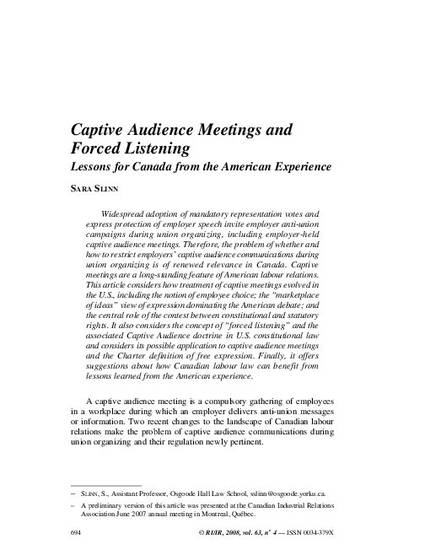
- captive audience meeting,
- Captive Audience Meetings,
- Employee Free Choice,
- Employer Speech,
- First Amendment,
- Forced Listening,
- Labor Law,
- unfair labor practice,
- Union Organizing Campaigns
Widespread adoption of mandatory representation votes and express protection of employer speech invite employer anti-union campaigns during union organizing, including employer-held captive audience meetings. Therefore, the problem of whether and how to restrict employers’ captive audience communications during union organizing is of renewed relevance in Canada. Captive meetings are a long-standing feature of American labour relations. This article considers how treatment of captive meetings evolved in the U.S., including the notion of employee choice, the “marketplace of ideas” view of expression dominating the American debate, and the central role of the contest between constitutional and statutory rights. It also considers the concept of “forced listening” and the associated Captive Audience doctrine in U.S. constitutional law and considers its possible application to captive audience meetings and the Charter definition of free expression. Finally, it offers suggestions about how Canadian labour law can benefit from lessons learned from the American experience.

Article available at Érudite.